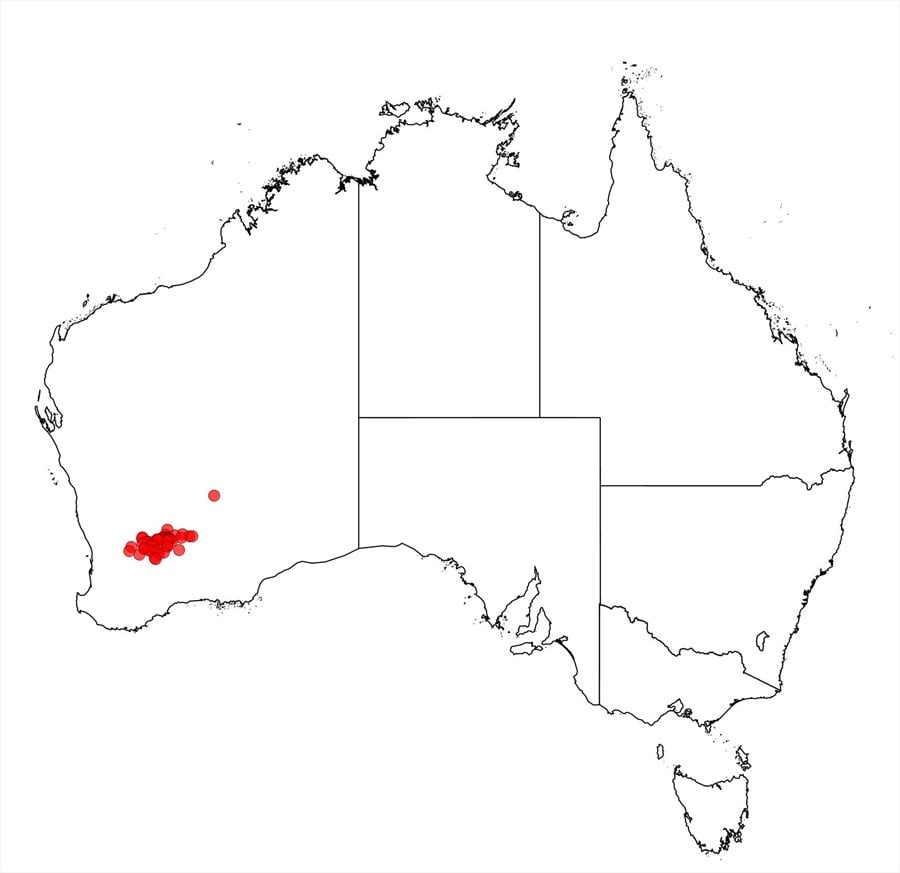Acacia rossei F.Muell.
WATTLE
Acacias of Australia
Family
Fabaceae
Distribution
Occurs from Kellerberrin E to Yellowdine and S to near Hyden, south-western W.A. Locally common, especially in disturbed sites, e.g. road verges, regeneration following fire.
Description
Spindly, open, sparingly branched shrub 1–3 (-5) m high, glabrous, somewhat viscid. Branchlets roughened by obvious stem-projections where phyllodes have fallen. Stipules setaceous, 2.5–4.5 mm long. Phyllodes crowded, patent to erect, linear, straight to shallowly curved, flat or (when dry) ±quadrangular, 1–3 cm long, 1–1.5 mm wide, obliquely and excentrically mucronate, slightly thickened, green; midrib and abaxial nerves resinous (resin often in beads); gland basal. Inflorescences comprising terminal false racemes which grow out at anthesis; peduncles (1.5–) 2–3 cm long, normally subtended by immature phyllodes, ebracteate at base; heads globular, densely 65–75-flowered, golden. Flowers 5-merous; sepals united at base. Pods narrowly oblong, 2.5–5 cm long, 7–11 mm wide, ±crustaceous, roughened by prominent brown excrescences. Seeds transverse to oblique, oblong to widely elliptic, 4–5 mm long, arillate.
Habitat
Grows in tall shrubland, usually in yellow sand.
Specimens
W.A.: c. 34 km NNE of Hyden, B.Barnsley 997 (PERTH); 21 km E of Southern Cross, M.I.H.Brooker 2050 (PERTH); 8.5 km W of Moorine Rock on Great Eastern Hwy, B.R.Maslin 4476 (K, MEL, PERTH, TLF).
Notes
Appears most closely related to A. glutinosissima but also has affinities with A. shapelleae. Acacia handonis (Qld) has similar prominent excrescences on the pod valves.
FOA Reference
Data derived from Flora of Australia Volumes 11A (2001), 11B (2001) and 12 (1998), products of ABRS, © Commonwealth of Australia
Author
B.R.Maslin
This identification key and fact sheets are available as a mobile application:
URL: https://apps.lucidcentral.org/wattle/
© Copyright 2018. All rights reserved.














